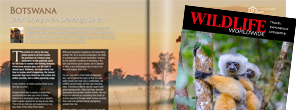For many, butterflies are the ultimate wild creatures, delicately beautiful but supremely hardy, adapted to almost every terrestrial habitat on earth, but all united by the miracle of metamorphosis. Our butterfly and moth watching tours take you to locations across Europe, and beyond, in search of innumerable fascinating species.



Why our butterfly watching tours are so successful




Where & how to watch butterflies & moths
Butterflies are the most-loved insects in the world. Delicate and intricately beautiful, yet capable of monumental migrations, they capture human imaginations wherever they occur. Though the closely related moths vastly outnumber them, around 17,500 butterfly species have been described in six families.
Most of our butterfly-watching tours are to Europe, where butterflies are diverse and beautiful but sufficiently similar to British species to be identified with ease. All through Southern Europe meadows, mountains, dunes and heaths are home to wonderful butterflies, including a fantastic variety of blues, fritillaries and skippers. In the Dordogne, our tours encounter small pearl-bordered fritillary, false ringlet, large chequered skipper, Cleopatra, southern white admiral, map and a host of other mouthwatering species.
Far to the east, in Southern Poland, we explore a wonderful range of acid and alkaline habitats for their butterflies. In the limestone valleys of the Jurassic Hills we look for eastern baton and Reverdin’s blues, sooty and scarce coppers, ilex and blue-spot hairstreaks, and Queen of Spain and Niobe fritillaries, among countless others. By contrast, the Pieniny Mountains support Pallas’s fritillary, Apollo, Camberwell beauty, lesser purple emperor, yellow-legged tortoiseshell and more.
Even further afield we can take you to Mexico, to witness one of the world’s great butterfly spectacles, as each year millions of monarch butterflies gather in the highlands of Central Mexico, at the southernmost point of their astounding multi-generational migration.
Southern white admiral

Small pearl-bordered fritillary

Monarch

Map butterfly

Apollo

Lesser purple emperor










